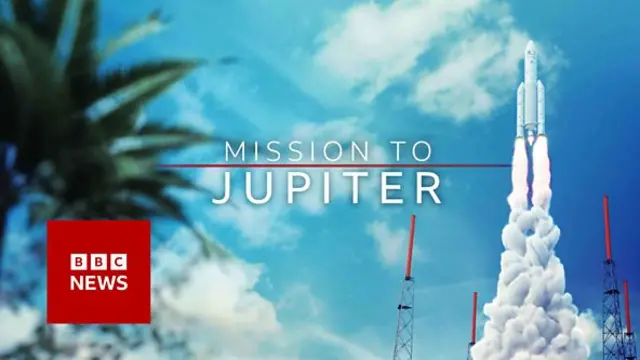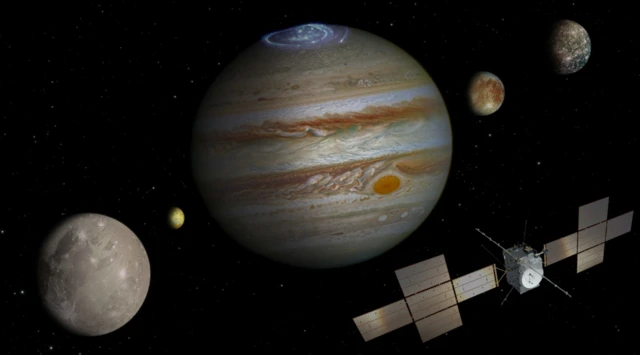Click play to watch Jupiter mission launchpublished at 12:48 BST 13 April 2023

If you're just joining us, welcome along as we count down to the launch of one of the European Space Agency's most ambitious ever missions - above is the scene on the launchpad in French Guiana.
In less than 30 minutes - at 13:15 BST - an Ariane 5 rocket is expected to send a spacecraft towards Jupiter and its icy moons.
You can watch BBC coverage of the build-up to the launch, and the moment itself, by clicking play at the top of the page or on BBC iPlayer here.



